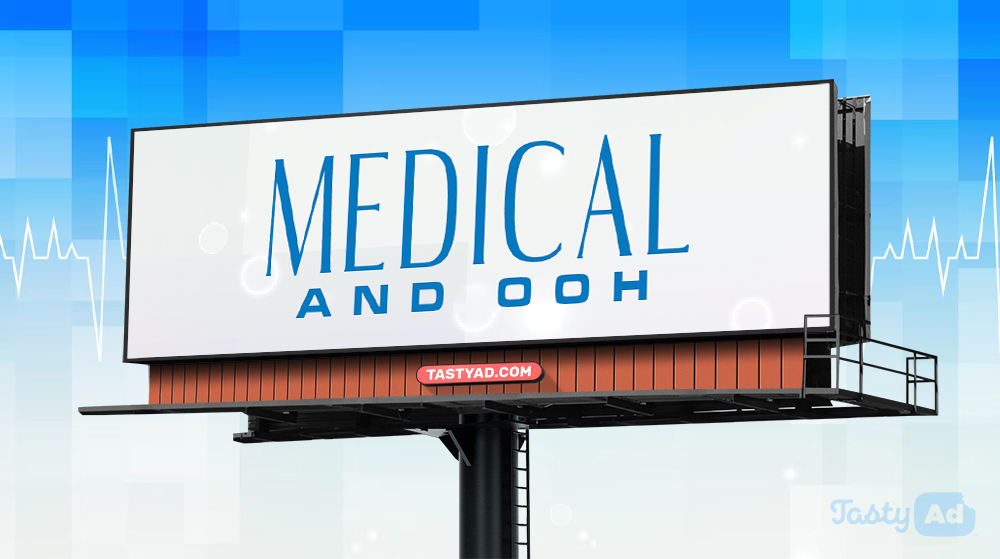Harnessing the Power of Out-of-Home Advertising for Medical Companies: A Path to Growth and Stability

In today’s competitive healthcare landscape, medical companies must adopt innovative marketing strategies to promote company growth and ensure long-term stability. While digital marketing channels dominate the advertising space, the effectiveness of traditional out-of-home advertising, particularly billboards, should not be overlooked. Billboards offer unique advantages for medical companies, enabling them to reach a broad audience, reinforce brand presence, and drive patient engagement. In this article, we explore how medical companies, including hospitals, dentists, dermatologists, urgent care facilities, and family practices, can utilize out-of-home advertising to bolster their growth and stability.
- Widespread Reach
Billboards are strategically placed in high-traffic areas, such as major highways, city centers, and busy intersections. This prime positioning ensures that medical companies can reach a diverse audience, including both local residents and visitors. By leveraging billboards, medical companies can increase brand visibility and raise awareness among potential patients who may require their services.
- Brand Reinforcement
Consistent exposure is crucial for building a strong brand identity. Billboards offer medical companies an opportunity to reinforce their brand message and create a lasting impression. By strategically designing visually appealing and memorable billboards, medical companies can effectively communicate their unique value proposition, such as personalized care, state-of-the-art facilities, or specialized expertise. A well-crafted billboard can foster brand recognition, trust, and loyalty among the target audience.
- Targeted Campaigns
While billboards have a wide reach, medical companies can also employ targeted campaigns to maximize their impact. For instance, a dental clinic can choose to display billboards near schools or colleges to attract young adults or parents seeking dental care for their children. Dermatologists can opt for billboards in popular vacation destinations to target tourists in need of skincare services. By carefully selecting the locations of billboards, medical companies can tailor their messages to reach specific demographics and patient segments.
- Geographic Expansion
For medical companies looking to expand their footprint into new regions or target neighboring communities, billboards can play a pivotal role. By strategically placing billboards in these areas, medical companies can generate awareness about their services, instill confidence in potential patients, and drive them to seek care at their facilities. This approach can prove especially beneficial for urgent care facilities and family practices that rely on local patients seeking immediate or routine medical attention.
- Promoting Special Offers and Services
Medical companies often offer specialized services or seasonal promotions to attract new patients. Billboards serve as an excellent platform to promote these offerings and generate interest. For example, a hospital may advertise a discounted health check-up package, while a dermatologist may highlight a new cosmetic procedure. By featuring compelling visuals and concise messaging, billboards can capture attention and drive potential patients to inquire further or book appointments.
- Enhanced Digital Integration
In the age of digital integration, billboards can serve as a bridge between offline and online marketing efforts. Medical companies can include QR codes or specific URLs on billboards, directing viewers to dedicated landing pages or online appointment booking systems. This integration allows for seamless engagement, as potential patients can easily access more information or take immediate action, such as scheduling appointments or exploring the company’s website. Not to mention the benefits of dynamic DOOH.
- Measurable Impact
While the impact of some marketing channels can be challenging to quantify, billboards provide a measurable impact on brand exposure. Medical companies can track the effectiveness of their billboard campaigns by monitoring website traffic, tracking phone calls or inquiries generated from billboard advertisements, or using location-based analytics. This data can inform future marketing strategies and investment decisions, ensuring a higher return on investment (ROI) for advertising efforts.
Conclusion
In an increasingly digital world, out-of-home advertising, particularly billboards, remains a powerful tool for medical companies seeking growth and stability. By leveraging the widespread reach, brand reinforcement, targeted campaigns, and geographic expansion opportunities offered by billboards, medical companies can effectively promote their services, attract new patients, and build a robust and stable presence in the market. When combined with strategic digital integration and measurable impact tracking, billboards offer a valuable marketing avenue that can yield significant returns for medical companies in the long run.


